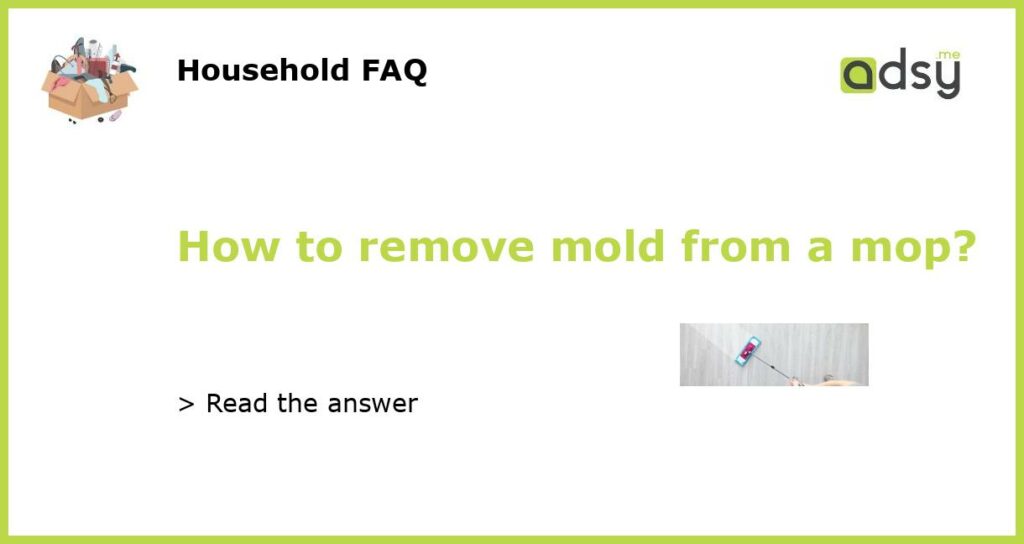Why is it important to remove mold from a mop?
Mold is a type of fungus that thrives in moist environments, making your mop the perfect breeding ground. Not only does mold on your mop look unsightly, but it can also pose health risks to you and your family. Breathing in mold spores can trigger allergies and respiratory problems. Therefore, it’s crucial to regularly remove mold from your mop to maintain a clean and healthy home.
Step-by-step guide to remove mold from a mop
Follow these simple steps to effectively remove mold from your mop:
Step 1: Assess the severity of the mold
Before you begin the cleaning process, take a close look at your mop to see how severe the mold growth is. If the mold is only present on the strings or head of the mop, you may be able to clean it effectively. However, if the mold has spread to the handle or other non-removable parts, it may be best to replace the mop altogether.
Step 2: Prepare a cleaning solution
Create a cleaning solution to kill the mold spores on your mop. Mix equal parts of white vinegar and warm water in a bucket or sink. Vinegar is a natural antifungal and antibacterial agent that can effectively eliminate mold.
Step 3: Soak the mop
Submerge the mop head in the cleaning solution and let it soak for at least 30 minutes. This will allow the vinegar to penetrate the mold and break it down. If the mold growth is particularly stubborn, you can leave the mop to soak for longer.
Step 4: Scrub and rinse the mop
After the soaking period, scrub the moldy areas of the mop vigorously with a brush or sponge. Pay extra attention to the areas where the mold is concentrated. Rinse the mop thoroughly with clean water to remove any traces of vinegar or mold residue.
Step 5: Dry the mop completely
Once the mold has been removed, it’s important to allow the mop to dry completely before storing it. Hang the mop in a well-ventilated area or outdoors to air dry. Avoid storing a damp mop, as this can encourage further mold growth.
Maintaining a mold-free mop
Now that you have successfully removed the mold from your mop, it’s essential to take preventive measures to ensure it remains mold-free in the future.
Proper storage
Store your mop in a dry and well-ventilated area to prevent moisture buildup. Avoid leaving your mop in a bucket or sink filled with water, as this can promote mold growth.
Frequent cleaning
Regularly clean your mop after each use to prevent mold from developing. Rinse it thoroughly with clean water and hang it to dry completely. Consider using a mop with removable and washable heads, as these can be easily cleaned and replaced if necessary.
Use antibacterial solutions
Occasionally, you may want to use an antibacterial cleaning solution to disinfect your mop and kill any remaining mold spores. You can purchase commercial disinfectants or make one using a mixture of bleach and water. Just be sure to follow the instructions and use caution when using bleach.
Removing mold from a mop is an important task to maintain a clean and healthy home. By following these steps, you can effectively eliminate mold and prevent its recurrence. Remember to regularly assess your mop for any signs of mold and take immediate action to clean it. With proper care and maintenance, your mop can remain mold-free and ready for use whenever you need it.






